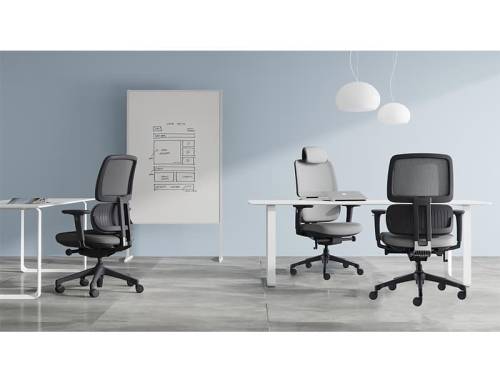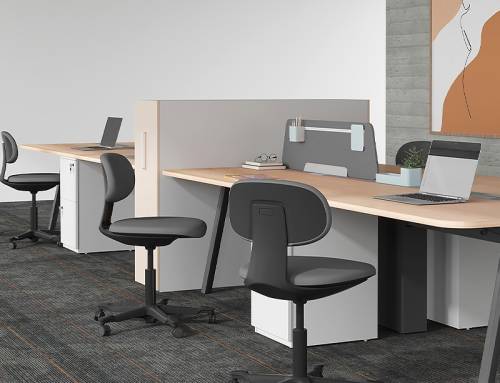Choosing a suitable chair for your workspace can be tricky but crucial to improving your comfort and promoting better posture. The office chair and ergonomic chair are the two most common options. So, how do these chairs work for different body types?
This blog distinguishes between the traditional office chair and the ergonomic chair, revealing how they cater to various body types.
Office Chairs and Ergonomic Chairs: An Overview
An office chair is an everyday chair without any specific customizations. These chairs often offer basic adjustment levels and may lack some features that directly address your body’s unique shape and size. They are often affordable but might lack the ability to deliver optimal comfort and support.
An ergonomic chair is another matter altogether. These chairs are designed to enhance comfort and support a good posture over long working hours. They allow for maximum customization, including independent adjustments for seat height, depth, armrests, lumbar support, and a tilt mechanism. These chairs are highly recommended for people who sit for extended periods and focus on maximum comfort and mindfulness of posture.
Suitability of Ergonomic Chairs for Different Body Types
When selecting an ergonomic chair, it’s essential to consider your unique body dimensions and preferences. Here are some general recommendations based on different body types.
Petite Body Types
People with a shorter stature or petite frame may benefit significantly from an ergonomic chair offering extensive adjustable features. For instance, adjustable seat height ensures your feet can comfortably touch the ground, while adjustable seat depth can help relieve pressure from the back of your legs. Ergonomic chairs for petite people should ideally have adjustable lumbar support tailored to fit the curvature of your spine.
Tall Body Types
Tall individuals or those with longer torsos need a chair that can adapt to their larger dimensions. The adjustable seat height on ergonomic chairs can allow your knees to sit comfortably at a 90-degree angle. Taller users usually have longer thighs, so should consider opting for a chair with a ‘seat slide’ mechanism, where the seat can slide forward, therefore increasing the depth of the seat. Features like adjustable backrest height and an additional headrest can also provide support and prevent aches and pains and strain on your neck and upper spine. Adjustable armrests can also take the strain off your shoulders and arms.
Plus-sized Body Types
Ergonomic chairs designed with a high weight capacity can provide the necessary support and stability for larger body types. Aside from durability, you should also consider the chair’s seat cushioning and materials. The seat foam should be firm but comfortable, and the materials should allow for breathability and easy cleaning.
Hourglass and Pear-Shaped Body Types
For body types with notable differences between their waist and hip sizes, an ergonomic chair can accommodate such shapes through lumbar support and a backrest that can mould to your body’s natural curve.
The ability to adjust the lumbar support can make an impactful difference in back support and posture. Also, ergonomic chairs with a seat slide feature can regulate the distance between the backrest and the seat edge, relieving thigh pressure.
Conclusion: The Ergonomic Chair Reigns Superior
Given the importance of chair selection for various body types, it’s clear that ergonomic chairs have the upper hand. While office chairs offer standard features, ergonomic chairs go above and beyond to cater to diverse body shapes with precise adjustments and focused support.
While ergonomic chairs might require a slightly higher investment, they offer benefits that make the cost worthwhile, such as fostering a healthier posture and boosting productivity. In the Office chair vs. ergonomic chair battle, your individual comfort and needs should determine your choice. And looking at these factors, the ergonomic chair triumphs.








